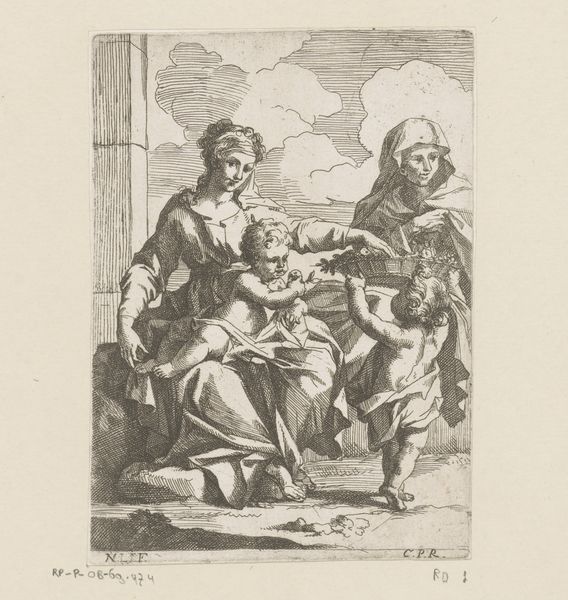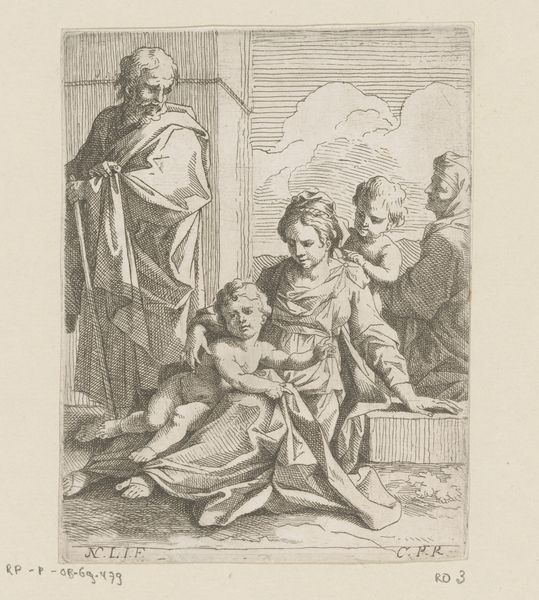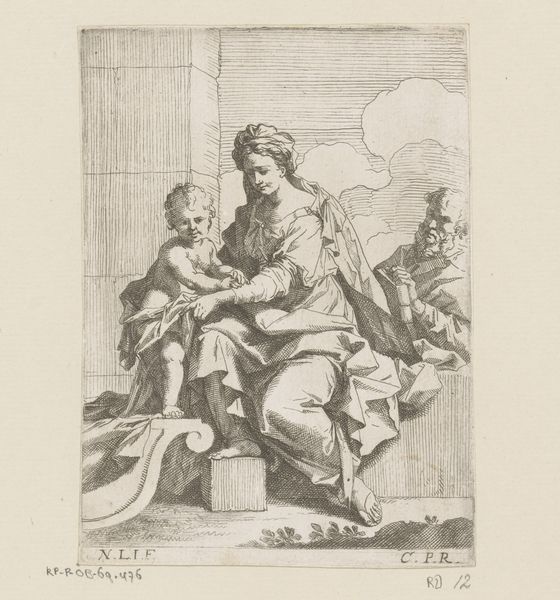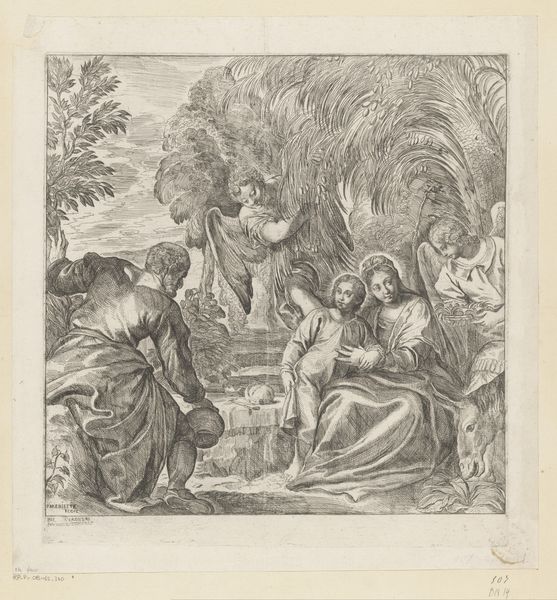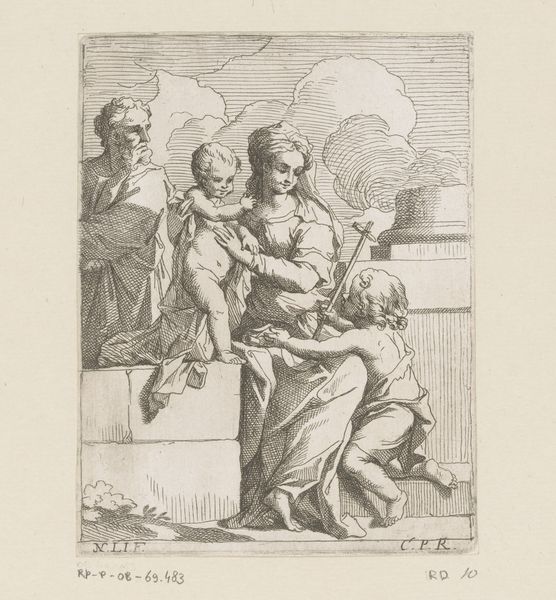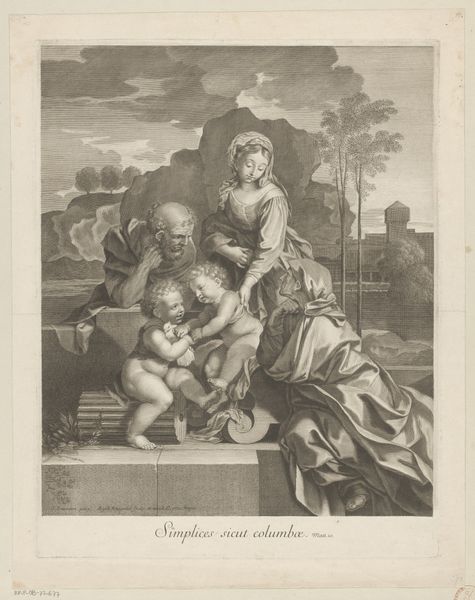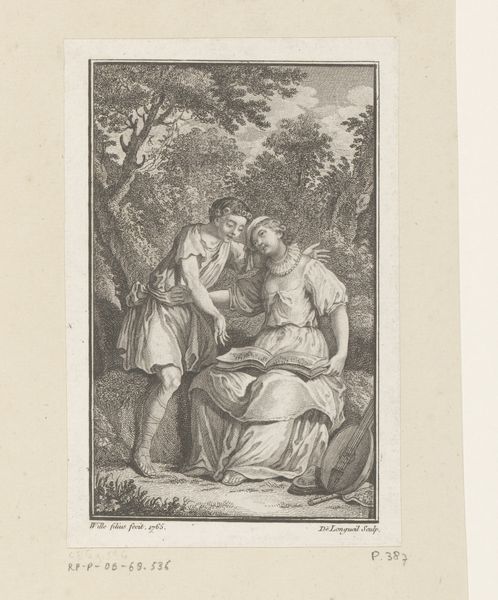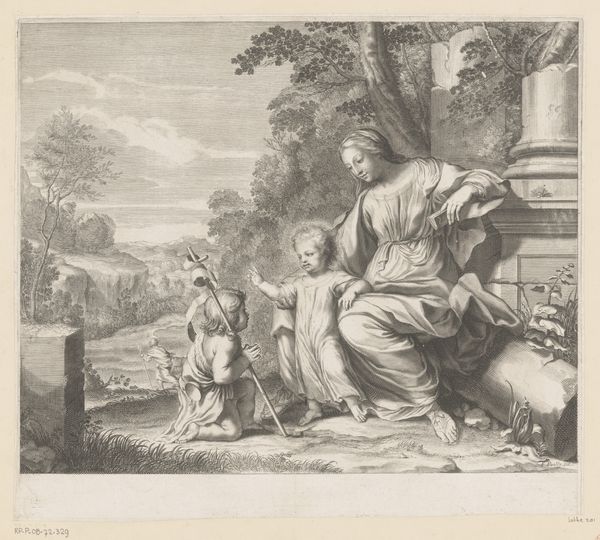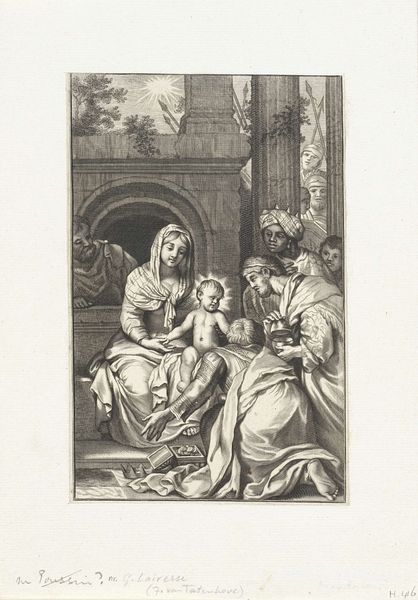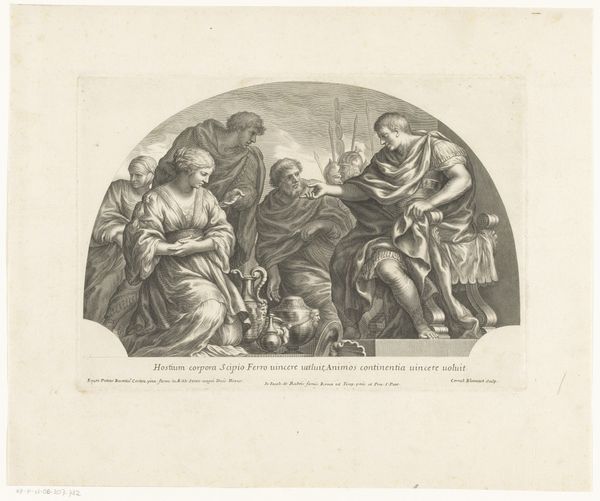
print, engraving
#
baroque
# print
#
old engraving style
#
figuration
#
history-painting
#
engraving
Dimensions: height 148 mm, width 114 mm
Copyright: Rijks Museum: Open Domain
Curator: Here we have "Maria met Kind, Johannes en Elisabeth," a 17th-century engraving now housed at the Rijksmuseum, crafted by Nicolas Pierre Loir. It's a delicate rendering of a familiar biblical scene. Editor: Immediately, the scene feels a bit restrained. The line work is very precise, but the figures seem static. It almost lacks the dynamism I typically associate with baroque art. Curator: Indeed, the work reflects the evolving social context around religious imagery during that period. Loir, working within a heavily regulated artistic landscape, navigates expectations of piety with his own aesthetic sensibilities. Notice how the gazes of Mary and Elizabeth avoid direct eye contact, a visual marker of modesty so central to depictions of women then. Editor: That's interesting. It raises questions for me about how women were constructed and perceived during that era. The image portrays not just motherhood, but also an encoded message about the ideal feminine subject. Is this work promoting those ideas, or simply documenting the conventions of that portrayal? Curator: It is likely doing both simultaneously. Consider the placement of John the Baptist as a child, carrying the banner. That inclusion signifies sacrifice and perhaps a subtle foreshadowing of Christ’s journey—the work acts as a kind of theological lesson made visual for public consumption, shaping social and religious understanding. Editor: But does the almost solemn nature of the depiction potentially underscore some unease within these religious dictates? The figures are together but there seems an emotional disconnect. Perhaps even hints of resistance to imposed roles within familial and societal constructs. The children seem active compared to the mothers. Curator: Your interpretation highlights a valid tension! And that's the lasting impact these works have. Understanding both their historical environment and considering what nuances linger outside the frame generates insightful conversations, especially regarding the ever shifting understanding of social norms around gender and belief. Editor: Exactly, by acknowledging how the social climate shaped such artistic creations, we get a clearer view of both history and the work. Curator: And for the public, it is useful in decoding and seeing ourselves reflected and possibly refracted within historical works such as this one.
Comments
No comments
Be the first to comment and join the conversation on the ultimate creative platform.
